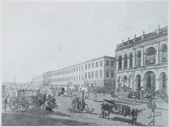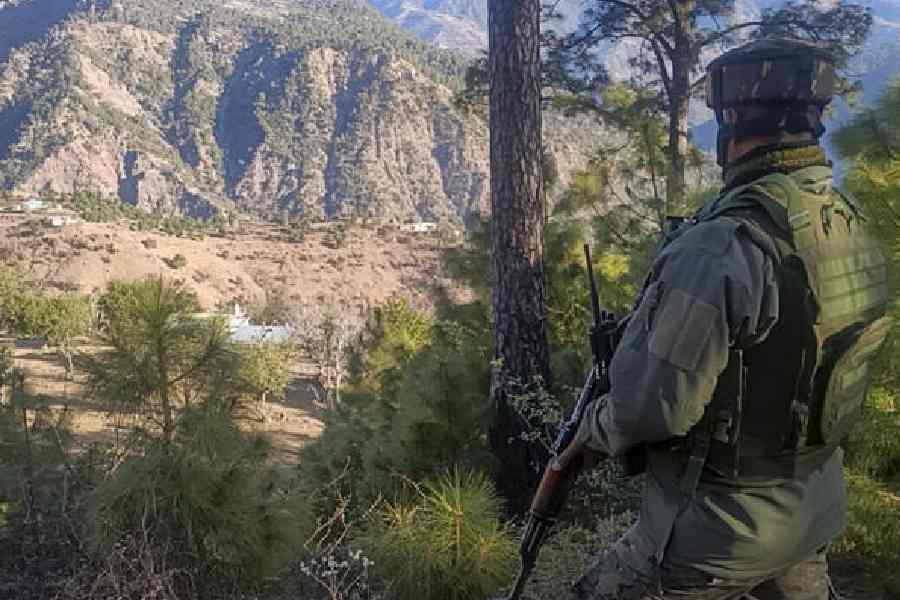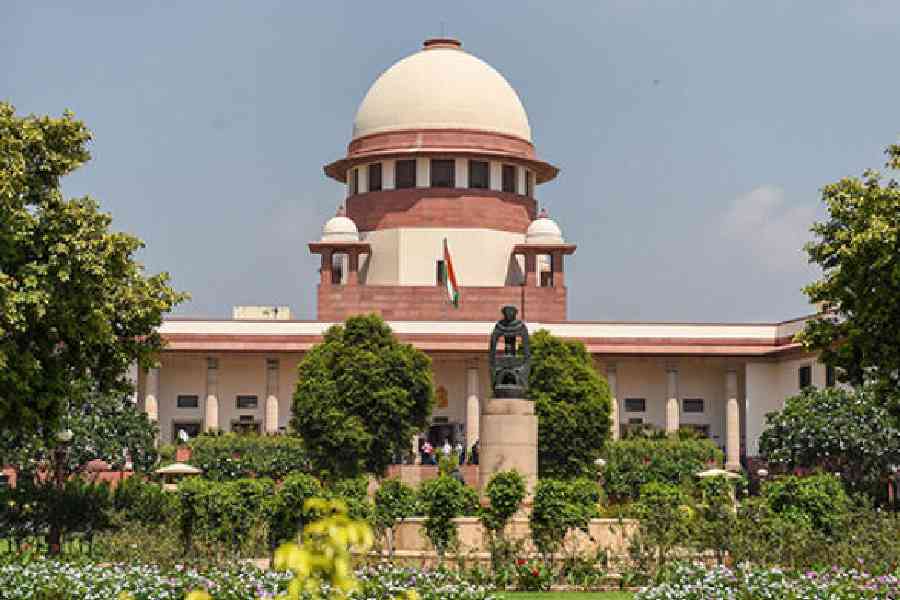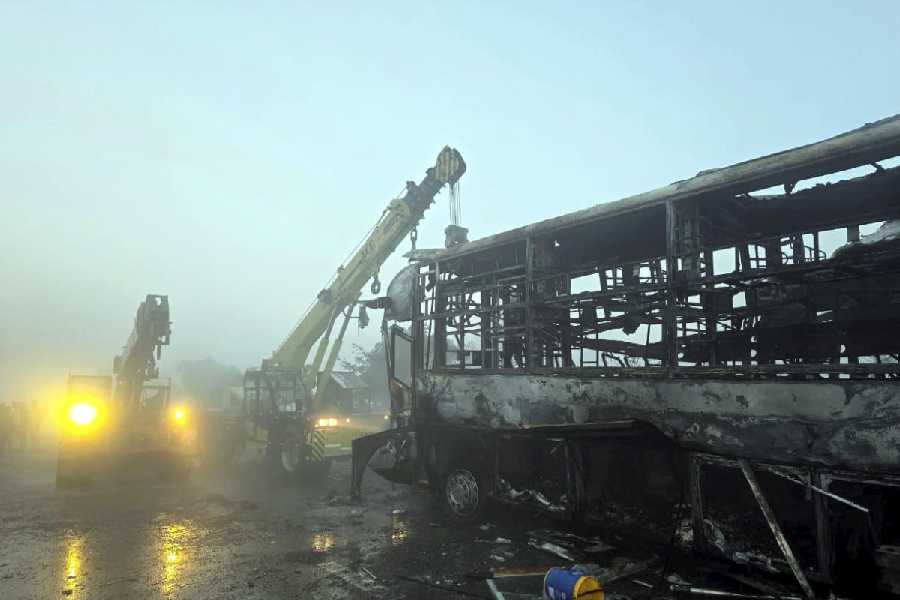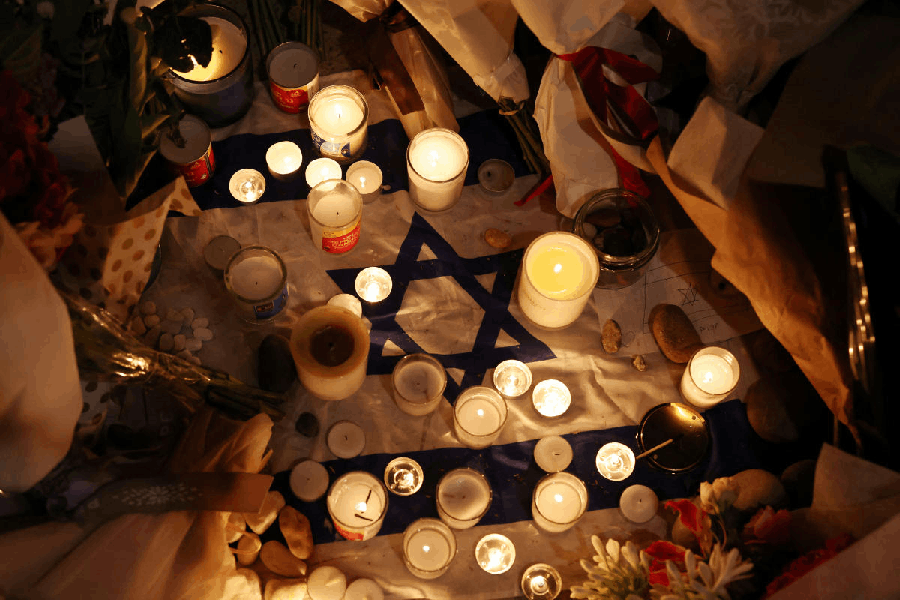 |
Will the Hyde papers (not to be confused with the Act relating to the fractious Indo-US nuclear deal), which have not seen the light of day for over two centuries, always remain in hiding? This is a collection of legal documents compiled by an 18th Century judge of Calcutta named John Hyde, whose house was on the spot where the Town Hall stands today and who was interred at the South Park Cemetery next to the obelisk of William Jones, the founder of the Asiatic Society.
The brittle papers, layered with the city’s legal and socio-political history, have remained unexplored since late 1775, when Hyde started writing them, not least because it is difficult to decipher his calligraphy. It is painstaking work. Historian Tapan Raychaudhuri says even turning the pages is a painful task.
 |
Yet Raychaudhuri has described the Hyde documents as “one of the most important sources of the Indian history”, especially relating to the first phase of the introduction of English law to India.
The Victoria Memorial Hall, which has possessed the 73-volume papers since its former curator and secretary Nisith Ranjan Ray had brought the collection from the high court Bar Library, had invited historian Pradip Sinha to get a selection published. The Hyde papers give an idea of the introduction of English law in India and of Indo-Shastric law, which is Hindu law in the first stages of its evolution. The record of the sessions trials, where judges distinguish between murder and manslaughter, are significant because of the application English criminal law to the Indian situation.
Says Sinha: “A number of attempts has already been made by scholars to make something of the documents. Initially I had said I would work part-time, but the secretary and curator of Victoria Memorial, Chittaranjan Panda, insisted that he would look after the financial needs, including expenditure on project.”
Sinha started work in April 2003, first as chairman of a committee. But somehow, says Sinha, the committee could not function and he had to take the entire responsibility. The other members of the committee were Arun Banerjee, professor of history and dean, Calcutta University (CU), Rajshekhar Bose, reader in history, CU, and Sanjukta Dasgupta, reader in history, CU.
But now that Sinha’s initial work is done and a selection of the papers ready, Victoria Memorial seems to have lost interest. This after Rs 3 lakh has already been spent on it, and Rs 2 lakh is earmarked for it in Victoria Memorial’s annual action plan 2007-08.
“After two years four months’ work, a selection of the documents from the collection was ready. But suddenly I was told that I was very slow and I had to finish the job in 15 days,” says Sinha. Then Victoria Memorial stopped payment from May 2006. Sinha says he finished the job on his own and produced a selection titled “Supreme Court in late 18th Century Calcutta”.
He referred it to Tapan Raychaudhuri, who submitted his report in which he described it as an “excellent selection”. Raychaudhuri called for a longer introduction with notes and a glossary.
Later, in an interview over the telephone Raychaudhuri said from Oxford, where he taught: “This is a taster, but it is an important contribution by itself.” He suggested that it be published with notes with the 13-volume The English Factories in India (1618-21 to 1668-69) edited by William Foster and published in Oxford between 1906 and 1927 as its model.
Sinha met Panda and submitted a fresh proposal a year ago but there is no communication from the curator and no assurance that the work would be published. “I gave up other projects to take this up. So much public money has been spent, yet nothing to show for it,” says Sinha.
He had submitted a CD containing the manuscript to the Governor, who is chairman of the board of trustees of Victoria Memorial, on June 26. Nothing came of it.
Another project by Sumanta Banerjee on the Himalayan paintings in the Victoria Memorial Hall, too, has apparently been shelved. Banerjee said over the telephone from Dehra Dun, where he lives, that Panda had proposed that he undertake that project. Nothing came of it either. In the memorial’s annual action plan, Rs 2 lakh has been earmarked so that Banerjee can work on a volume of the paintings of the uncle-nephew duo, the Daniells. But unless something comes of the first project he is unwilling to touch the second.
Panda, when contacted over the phone, said: “If there is a gap (in payment) that is for reasons beyond control.” He claimed he was not aware of Sinha’s payment having been stopped, and if there were any dues they would be cleared forthwith.
He claimed Tapan Raychaudhuri’s comments “were not very kind” and he has not received any written communication from Sinha on Raychaudhuri’s observations. Panda, however, assured that matters would be sorted out with Sinha this week. Sumanta Banerjee’s research project, too, will be published this year, he promised.
crime and punishment in old Calcutta
 |
John Hyde, one among the first group of judges to be appointed by the king in 1774, is a forgotten name. Historian Pradip Sinha says he came from the British squirearchy, a background similar to that of Warren Hastings and Elijah Impey, a Supreme Court judge. He was a hospitable man and his parties were very popular. He seems to have been artistically inclined — he drew landscapes in the documents known for their dryness. He often wrote in antiquated shorthand, undecipherable today.
Hyde mentions some English-knowing Bengalis who served as copyists. Knowledge of English was not rare among Bengalis then.
The Hyde papers document the nature of crime and punishments in Calcutta and the areas under the jurisdiction of the Supreme Court. It presents a vivid picture of slavery in late 18th Century Calcutta and in Bihar and other parts of Bengal as well. William Jones writes an animated account of the prevalence of slavery in Calcutta. Jones’s charges to the grand jury on criminal cases are an important part of Hyde papers. These were, however, printed in the 18th Century style.
Among Europeans duels were still accepted as a mode of settling honour. In Hyde papers we may notice a certain ambivalence about the criminal nature of duels. The fascinating beauty Madame Grand finds a place here. Monsieur Grand had challenged Philip Francis, Hastings’ deputy, to a duel, but Francis declined, as he argued nothing improper had happened between him and Madame Grand.
The papers tell the story of a Turkish trader, Haji Mustapha, who was a friend of Warren Hastings. The adventurer’s will came up in the Supreme Court.
The Hyde Collection contains a volume of about 300 petty police cases, whose records were handed over to the Supreme Court. These cases, if closely studied, give an idea of the Calcutta underclass and of the so-called Luso-Indian community: Indians with Portuguese names, sometimes called Black Christians.
Punishments for petty crimes could be very severe indeed, as in contemporary England, where the criminal law was described as savage by some later jurists. Whipping was common and sometimes led to death.
The English seemed to have a dilemma in the application of the principle of legal equality in an alien setting. Punishments of the whites seemed to have been milder than in the case of Indians.
S.D.

